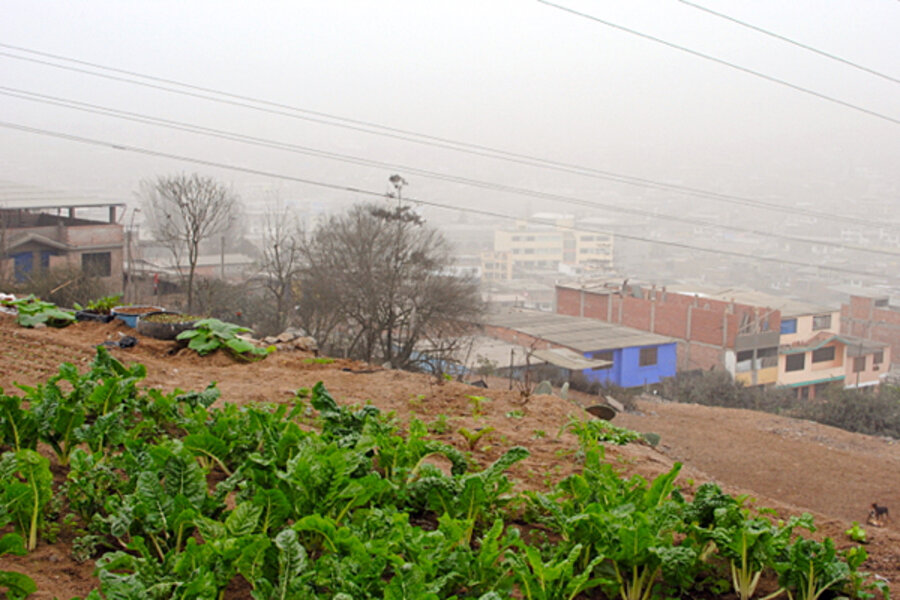Peru's secret gardens reap benefits
Loading...
| Villa María del Triunfo, Peru
The slums crawl up the hills here at Lima’s edge, crisscrossed by dirt roads and a trash-strewn tract of land beneath high-tension electricity towers.
No one builds beneath the lines, lest sparks should fall. But in the winter fog hanging over one hill, an oasis blooms under the canopy of wires: a growing urban garden has created food security and extra income for some 40 families.
Peru’s sprawling capital city is home to nearly a third of the country’s population, thanks to mass migration from rural areas over the past 30 years. This poor suburb of Lima represents one successful example of the numerous global cities, including several in Latin America, that have bet on urban agriculture to stave off malnutrition and poverty.
It’s also an example of how public policy can spur private initiative. The municipal government has ceded partial responsibility for maintaining the program it launched in 1999 to private hands six years ago. The owner of the electricity towers, the Red de Energía del Peru (REP), took on the garden as a corporate social responsibility project. Next year, the government will pull its support altogether, leaving REP and the growers to carry on.
“People living in the provinces for one reason or another came to Lima and settled in the periphery,” says Flor Paredes, program coordinator with IPES, a Lima-based nonprofit focused on sustainable development that has guided the program. “But they have agriculture in their veins.”
Gregoria Flores walks through rows of Swiss chard alongside Julio Cortana. Mr. Cortana grows the leafy greens to feed his family – seven children and 12 grandchildren – and earn income at markets in Lima’s nicer neighborhoods. Ms. Flores provides technical assistance as the program’s only paid employee.
She suggests to Cortana which greens to cut and when, and tells him that if he cuts the chard when it’s young, he’ll sell at a better price at the market. Flores gives him advice on how to avoid bugs organically, too: The growers here are working toward an organic certification that would let them sell at one of Lima’s growing bioferias, open-air markets of higher priced organic products.
“This was a dump,” Flores says, pointing to a new garden being cleared of trash lower on the hill. “This was fertile ground for gangs.”
Villa María del Triunfo is the southern part of what has become known as Lima’s conos, or “cones,” the urban sprawl that has pushed the capital’s northern, eastern, and southern limits. The southern cone is one of the metropolitan area’s poorest and most problematic, a place seemingly left behind by Peru’s economic boom of the past decade.
Today, beets, radishes, cabbage, cauliflower, carrots, chard, onions, and lettuces freshen the only stretch of available land amid the concrete block houses and shacks roofed with aluminum that crowd the hills of Villa María del Triunfo. Flores says the families who participate increase their average monthly income 50 percent from $143 to $214.
The global nonprofit Resource Centres on Urban Agriculture and Food Security, which works with IPES on the Peru project, reports similar urban agriculture successes in Cuba, Bolivia, Colombia, Ecuador, Brazil, and Argentina over the past decade. In Peru, Ms. Paredes says sustainability is the next major challenge. That means helping the growers learn to produce their own seeds and earn enough to maintain the grounds season after season. Right now, REP supplies seeds three times a year for plantings.
Flores, who has seen how the garden has expanded and how the community has made it their own, puts it another way: “We’re birds of passage, and they’ll have to generate their own seeds. Soon, we have to stop holding their hand.”








